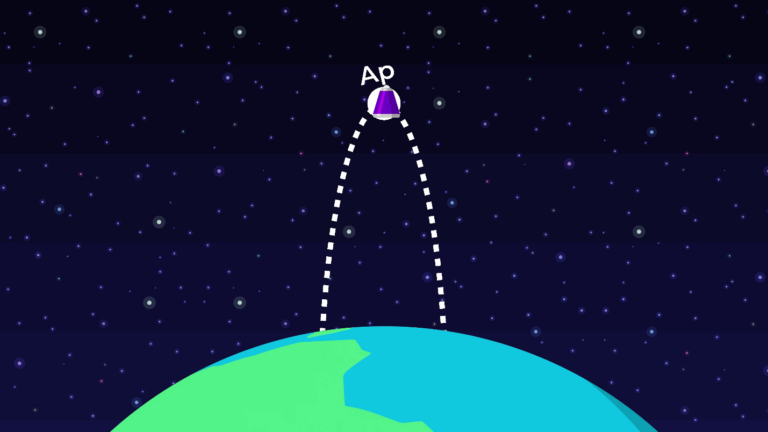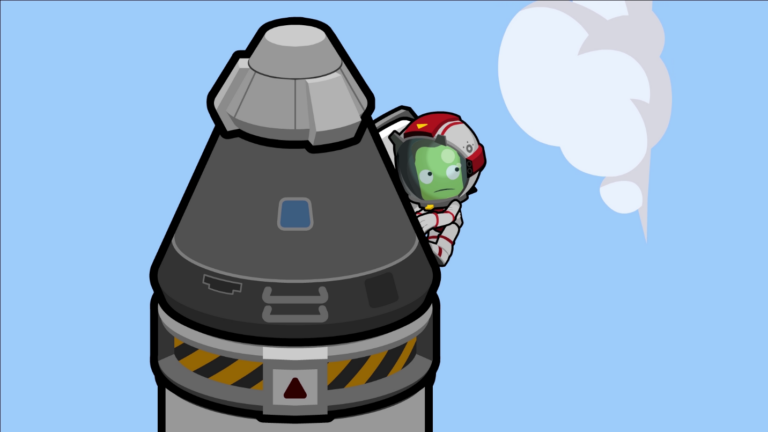Developer Insights #5 – KSP2 Tutorial Animations
Hello! My name is Rafael Calonzo Jr., and I am the Senior 2D Animator on Kerbal Space Program 2. You may be wondering — as I did when they first approached me for this role — why would a realistic space travel simulation need two-dimensional animation?
Let’s go back to a weekday morning in 2013. Nate Simpson (KSP2 Creative Director) and I are working on an ill-fated mobile title. He mentions how tired he is from playing some game into the early morning hours and — as proof — sends me a link to a forum post featuring his very complicated (yet still plausibly realistic) spaceship. It was gathering ample praise from the other forum dwellers.
I poke around the site as he continues to rave about the game’s unyielding faithfulness to real science and technology. I nod politely and promise to give it a try, but in my head I have already decided that some nerdy pastimes are too impenetrable, even for nerds like me.
Four years and several jobs later, Nate inquires whether I’d like to join him on a new project that is basically his “dream game.” As he starts describing it to me, I interject that it sounds like that game he was obsessed with years ago that, full disclosure, I never actually tried.
As you can guess, he confirmed that yes, that was the game, the new project was its TOP SECRET sequel, and actually it’s fine that I didn’t play it because now could I help make tutorials for people like myself?
Tutorials? Nobody LOVES tutorials. They are the vegetables Mom makes you eat before you get any dessert. It doesn’t matter how essential those vitamins are or how fancy the veggies are dressed up, you just want to choke them down (or slyly spit them into a napkin) so you can get to the chocolate cake.

Figure 2 It’s not rocket science (yes, it is)
But from our very earliest meetings, we wondered how we could recapture that cohort of players who tried the original KSP but would give up before they got to experience the real “magic” of the game. However, to actually progress that far, they’d need to — NO BIG DEAL — learn a little bit of rocket science. What could we do to keep those players engaged, while stealthily imparting the skills and knowledge they’d need to really flourish?
Eventually the question became: Is it possible to make tutorials that … sneak veggies into the dessert? Could we make instructional media that was approachable, with lessons that would creep into your head without you realizing? What would those tutorials look, sound, and feel like?
We spent some time reflecting on what types of instruction managed to survive in our brains since childhood. Like most Gen-X kids raised by television, we could count to twelve before kindergarten because that pinball machine from “Sesame Street” looked cool and had a soundtrack that slapped. We can still sing about how bills and conjunctions function because of “Schoolhouse Rock.” We’ve won half the battles by knowing how to pet strange dogs and not hide in old refrigerators thanks to “GI Joe” PSAs. And as adults we binged dozens of Kurzgesagt explainer videos like the colorful, addictive-yet-informative fun-size candy that they are.
Our super-unscientific findings: WORDS + MOVING DRAWINGS = IDEAS STICK TO BRAIN GOOD.
Some of the concepts we experimented with in pre-production had mixed success. You could tell we watched and rewatched the classic music video for “Remind Me” by Royksopp (still so good!), whose “Airline Safety Brochure” style was fun but a bit labor-intensive. Especially when I tried to portray actual vessels and parts from our game. And unfortunately the strokes around everything were prone to making weird seams on the characters.

Figure 3 Please turn off all personal electronic devices and 12 point outer strokes, Jeb
At different points of pre-production, we even considered making the tutorials pre-rendered 3D, real-time 3D, or real-time 2D puppets. Eventually we settled on a flat, pre-rendered 2D style that would be easier on production and (hopefully) more legible for the player.

Figure 4 Goodbye outer strokes, hello outer space
Pre-production was also the perfect time to refine the content of the tutorials before we made any final assets. Each completed tutorial script was run through a text-to-speech utility to create “Robo-talkies” of the narration. Then I would draw dozens of corresponding storyboards and combine them with the Robo-talkies into an “animatic.” This picture book-style rough cut of the video gives enough of a sense of the visuals and timing that I can share it with the team.

Figure 5 A storyboard from a scene I was really looking forward to animating, but it didn’t make the cut. Get well soon forever, Buzz.
The completed storyboards and animatics for all 32 tutorial scripts added up to 47 minutes of animation — half an animated feature! Which is kind of a lot for one guy (me) to produce and more importantly, way too much for the players to sit through. So we redistributed the content, making skill-based lessons into interactive sequences, while reserving the animations for scientific concepts.

Figure 6 We heard you liked planes in your rocket game
Once we had our scope dialed in, we conscripted a ragtag production team to bring the videos to life. My fellow “Rafael” at Squad, Rafael Gonzalez, and a selection of other talented artists cranked out the cartoonified planets, backgrounds, and vessels in record time. Tom Witte and Cisco Martinez, two colleagues of mine from the CD-ROM Wars who’ve since graduated to the motion graphic world, lent their multitude of animation super-powers and made my life so much easier.

Figure 7 Dream, build, fly… into the ground
As much as we enjoy making these things, we know that nobody buys this game to sit and watch cartoons. They want to fly things and blow them up! Our sincere hope is that they’ll watch enough of these to know *why* their things blew up.
And as the saying goes: Knowing is half the tutorial. KAY-ESS-PEEEEEEEEE…
